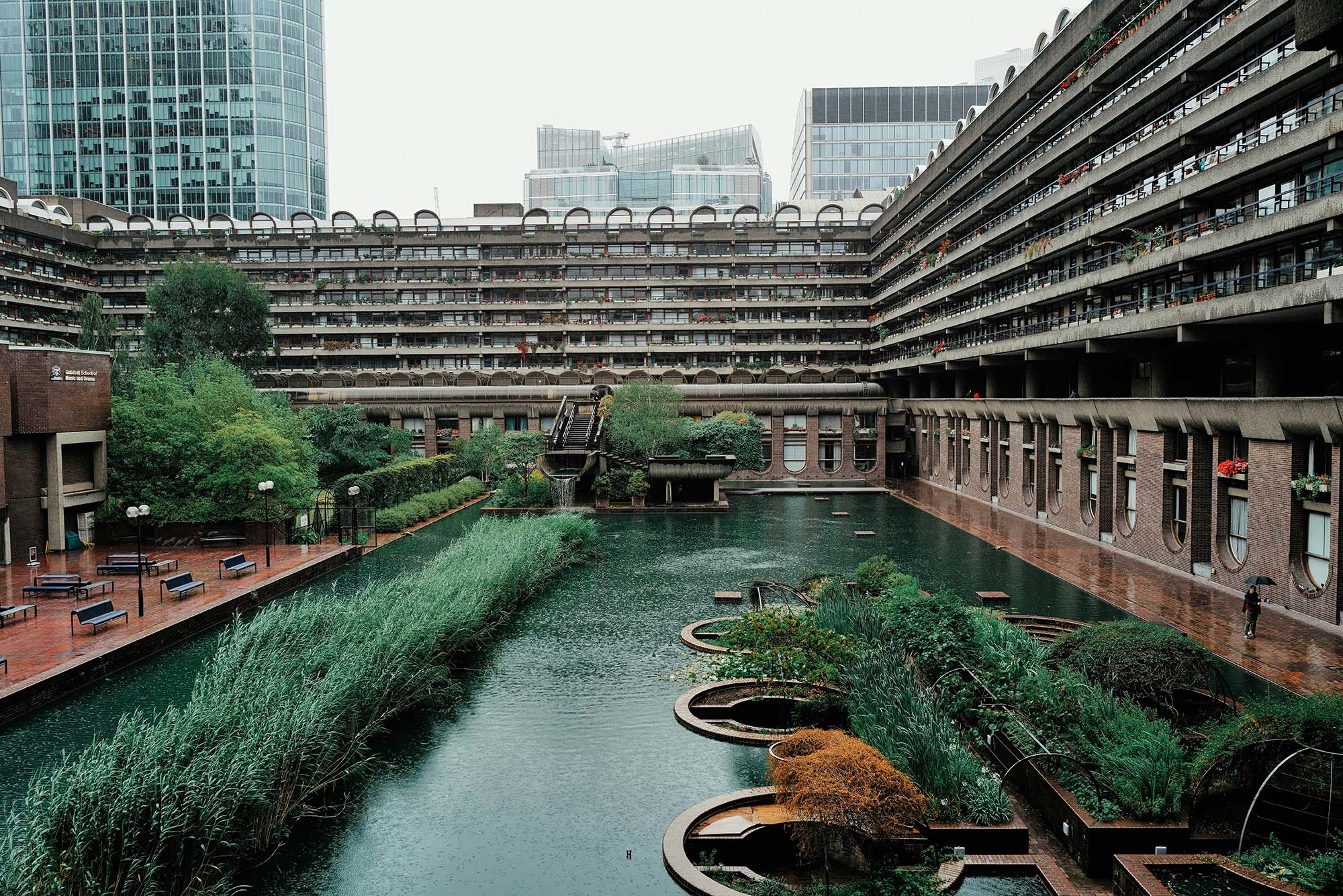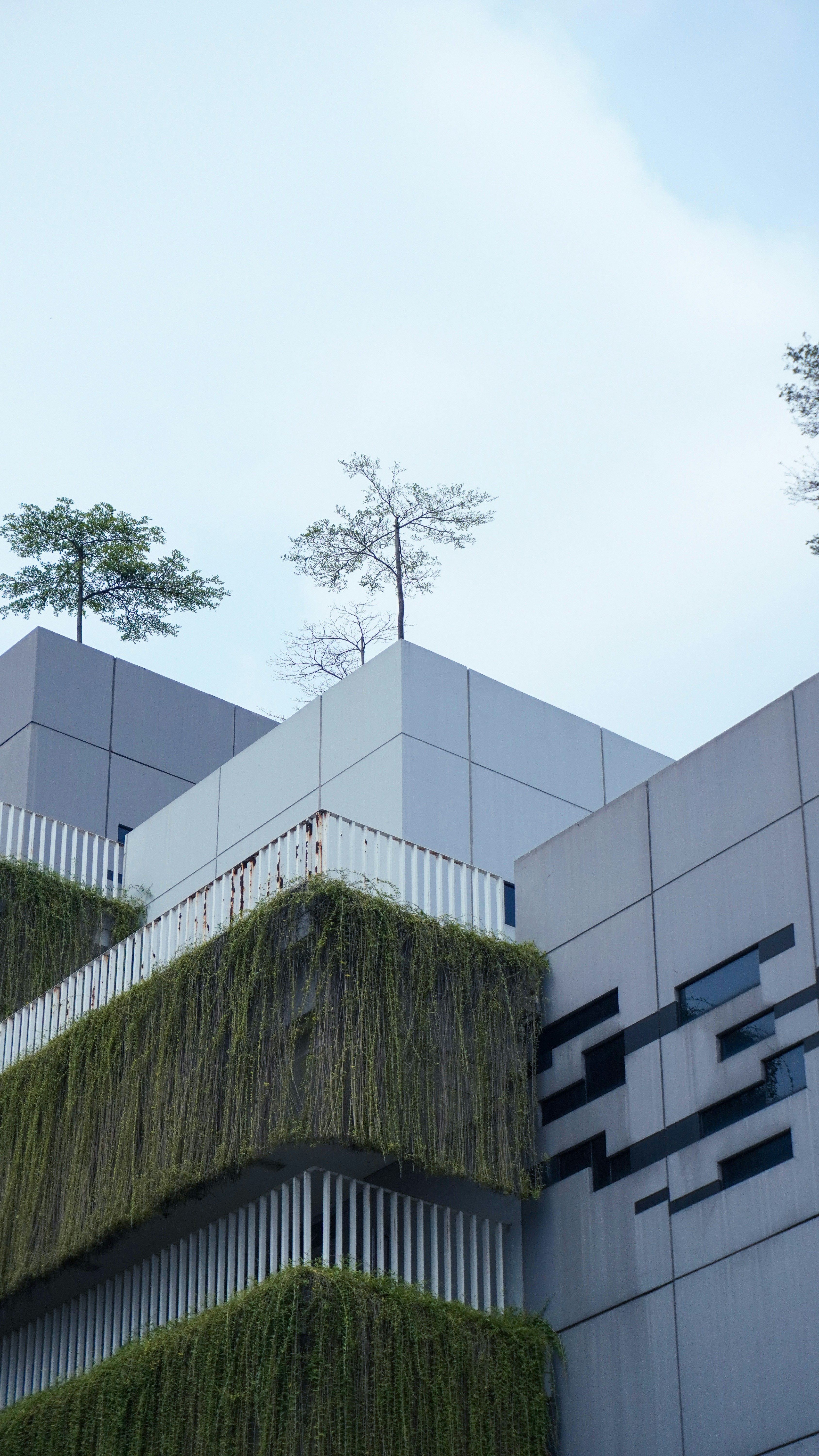Eco Brutalism: How to Make Concrete Bloom and Buildings Breathe
Mar 15, 2024
The combination of beautiful and appealing buildings that are also sustainable seems like a significant challenge. Eco brutalism offers a surprisingly effective solution. A newer architectural movement that many architects and space designers find themselves exploring, it’s essential to understand the difference between traditional brutalist and eco focused brutalist.
What Is Eco Brutalism?
Eco brutalism is an architectural style related to traditional brutalism, which favours concrete, heavy structures and ecologically harmful materials but transforms it with the use of environmentally friendly components, including plants. It focuses on using sustainable and natural materials to combine aesthetically pleasing and eco-friendly concepts. Though some refer to it as a greenwashing tactic since it doesn’t always utilize the best sustainable concepts, it is a growing trend in many areas.
What is brutalism?
To understand eco brutalism, designers need to consider what brutalism itself is. Brutalism began in the mid-1900s and peaked around 1970. Foreboding, concrete, modular, and steel-designed, this style was heavily used in institutional buildings. At this period, though, the demand for affordable housing was incredible, thanks to the Baby Boom. That led to the use of brutalism architecture’s move into the residential sector.
Its name doesn’t pay homage to the rough, even painfully hard look of these structures. Rather, it comes from the French term Béton brut, which translates into “raw concrete.” For about 20 years, brutalism could be found in virtually any urban environment, operating as religious organizations, theatres, and social housing projects.

Bosco Verticale, Milan. Photo by Babak Habibi
How Eco Brutalism Changes the View
The dominating components of steel and concrete, along with its more basic style, were both a testament to the difficult times and more practical applications. In other words, brutalism is harsh. Eco brutalism was developed as a way to add softness and overall environmentally friendly applications to these stark walls. Initially focused on hanging green plants and structures on the balconies of these towering homes or along the roofline, eco brutalism aimed to change the focus a bit.
Eco brutalism incorporates life – trees and other plants being a core component of it. The concrete walls and big block balconies of towering office buildings and residential spaces make the ideal location for greenery that can take full advantage of the natural light.
While it seems to initially be a way to “fix” the stark, limitedness that brutalism creates, eco brutalism is actually a way to celebrate life, while not replacing the past. By adding the green, it’s possible to at least adjust the ecological footprint that brutalism creates within a region.
Transforming Rather Than Replacing
One of the core concepts of eco brutalism is the focus on transforming a space from the brutalism architectural style. The goal, and a component of the sustainability focus of these structures, is to transform brutalist-style spaces to maintain their functionality while incorporating natural elements.
Another core component of this unique architectural design is the juxtaposition between the grim human and dominant feel of brutalism to the resilience and vibrancy of nature. By capturing this unique change, it's possible to transform the way these buildings work without having to tear them down (and, at the same time, expose the planet to additional toxins and harm).
Also notable is that, even with the addition of green to these spaces, one of the more fascinating elements of eco brutalism is that it creates a continuous feeling of something being missing. The addition of green components helps move it towards a more natural state, but there's a constant feeling of lacking as if something still is not ideal. That is, of course, the institutional and harsh concept of concrete, steel, and a lingering feeling from that Post War era.

Barbican Estate of the City of London, Photo by Daniel Moore
How to Incorporate Eco Brutalism
The design philosophy of eco brutalism is not to tear down and replace but to morph with the addition of green. It maintains the use of unfinished materials, such as very basic concrete, with the goal of producing a more sustainable design. To achieve this, focus on these key components.
Incorporate native plants into the design
Eco brutalism favors greenery in a variety of forms. The inclusion of any type of material can work well, especially with a focus on green. This could include:
Shrubs: Choosing native shrubs for the area adds a prominent amount of environmentally sustainable materials, quickly transforming the structure. These help to define the outdoor spaces.
Native grasses: To make them truly sustainable, native grasses may be incorporated. Native is key because it adapts better to the environment. Choose varieties that don't require a significant amount of care to maximize the concept of eco-friendliness.
Trees: The inclusion of trees, including larger oaks or foliage-heavy trees is another way to create more of a green-focused space. Trees can help to provide shade, removing some of that stark, cold-like feel to these spaces.
The selection of plants should focus heavily on choosing items that are very specifically adapted to the climate. More so, this is not a garden and therefore, the most commonly used plants focus heavily on minimal inputs and simplistic maintenance.
Inclusion of green roofs
A green roof can be seen as one form of eco brutalism, especially in more urban-centric areas. Though these brutalism buildings and designs seem to replaced landscapes with concrete, the inclusion of the green roof – designed with care – offers to bring back some of that square footage overall.

Habitat 67 in Montreal, Canada. Photo by Dana Andreea Gheorghe
The green roof creates a natural element in these structures, often allowing for a far more flexible design in terms of the plants present there. At the same time, it affords a higher sense of sustainability for the space. To be successful, especially in transforming existing, older structures, architects must consider the following:
Creating a naturalistic appearance: The use of local grasses and plants is key to this success.
Building with care: With the need to have a structural assessment, waterproofing, and proper drainage systems added, as well as provide ongoing maintenance, a green roof is more labor-intensive than other strategies.
Details matter: Adding a garden of wildflowers to this space, beds of functional vegetable gardens, or the use of simple but lush grasses can help to transform the space while aiding in the green-focused concept.
Incorporation of vertical or living walls
Though challenging initially, the concrete walls of brutalism become an excellent surface to support the growth of vertical walls, also known as living walls. They make a more impactful sentiment compared to the inclusion of plants here and there. These living walls can incorporate numerous types of greenery, including mosses, ivy, and even hydroponics, a newer move in the industry to push the design concept to more sustainably built concepts.

One Central Park, Sydney. Photo by Jenny Theolin
Living walls provide several core benefits in this style:
They create a strong visual impact: The aesthetic appeal of a towering wall of living plants can transform the way any space feels.
They reduce demand on space: Unlike roof gardens, this method does not require nearly the amount of square footage to dedicate to the project, allowing for more of that valuable square footage to focus on functional needs.
Energy efficiency can also be present: These types of living walls can help to minimize humidity, keep temperatures more even, and offer the potential for reducing energy consumption due to their shading benefits.
Where Eco Brutalism Is Expanding
Though many regions of the world have incorporated the concept of eco brutalism (often without formally calling it this), there has been a significant surge in its use in tropical areas like Costa Rica and Brazil, as well as population-dense areas like Bangladesh. It's also found in Mexico's more urban areas and throughout Indonesia.
Notably, those properties that go up with the eco brutalism application from the start incorporate more elements of artistic charm and detailing, which traditional brutalist spaces heavily lack. This differs substantially from the origins of brutalism.
Opposition to Eco Brutalism
It’s not possible to overlook the less-than-positive response that eco brutalism creates to some architects and designers. Some find that it really does not add a function of sustainability to spaces in any way, nor does it erase the foreboding, even menacing, feel of brutalism buildings.
The biggest concern here is that eco brutalism does not, in itself, have any consideration for the ecological needs of the region, nor does it erase the damage done by these structures. In short, some feel that while many architects are moving heavily towards the inclusion of truly sustainable materials and methods that reduce the impact on the environment as a whole, eco brutalism white washes that. It does not make significant changes and seems to be a quick fix or a bandage rather than a true solution to the problem.
The Benefits of Eco Brutalism Are Clear
There is demand for this unique type of sustainability movement, and at any level, the inclusion of plants and life in or on structures that are otherwise very stark and limiting can only be seen as a positive thing. More so, the transformation that these spaces create within their environments is not only good from an artistic standpoint and design function but also due to the more positive impact it has on bringing nature back to everyday life.
